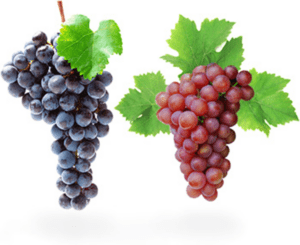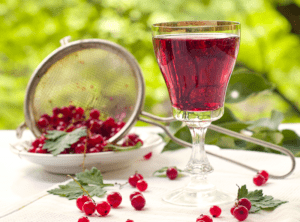Our wine of the month is wild grape. When it comes to winemaking, grapes are generally classified into three separate groups: wild, wine, and European wine. Wild grape wine can be made with grape varietals such as Muscadine, Fox, and Frost. These grapes are high in acid, low in sugar, and assertive in flavor. We’ve got the lowdown on this delicious recipe! We’ll tell you where to find the grapes, their various health benefits, and which foods they pair best with.
Why should I make wild grape wine?
It comes as a surprise to many that wine can be healthy. When you make wild grape wine, the seeds of the grapes contain polyphenols, which are micronutrients containing anti-inflammatory and anti-oxidant properties. Evidence has proven that polyphenols can help prevent cancer, type 2 diabetes, cardiovascular and neurodegenerative diseases. Wild grapes also contain vitamins B1, B6, C, manganese, and potassium. Check out our wild grape wine recipe to get started!
Recipe:
20lbs of Wild Grapes
10 lbs. of Sugar
2 tbsp. of Yeast Nutrient
¾ tsp. of Pectic Enzyme
½ Wine Tannin
Yeast EC-1118
Wondering why this recipe calls for so much sugar? Keep in mind that because wild grapes contain the lowest amounts of sugar, they will need the most added to make wine. Pressing the wild grapes, however, can be done very quickly because a small tabletop press can crush 50-100 lbs. of grapes (about 15 lbs. a time). This recipe should make at least 5 gallons. If you’re a bit rusty on wine making with grapes, check out our guide to give your memory a refresh.
Where and how can I find wild grapes?
Unlike other grapes that tend to grow in clusters, wild grapes grow as separate berries. These are typically a bit smaller than other grapes, and can be black, purple, or dark blue. Fortunately, wild grapes can be found in almost any climate. Their vines, which grow very quickly and tend to climb and envelop structures, can be found along roads, fences, forests, and riverbanks. In fact, the wild grape is also called the riverbank grape!
What foods does wild grape wine pair best with?
The pungent taste and aroma of wild grape wine pairs especially well with rich dishes and meats. Similar to merlot, malbec, pinot noir, and cabernet sauvignon, this variety compliments beef, steak, game, lamb, pasta entrees, and rich cheeses very well. The bold flavor of this recipe will make your meaty and cheesy dishes that much better.
So next time you venture outside, keep your eyes peeled for the winding vines with the dark grapes- they might just help you make your next batch of wine! For more information on the home winemaking process and the tools you’ll need, check out our winemaking equipment and accessories.


